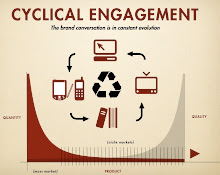
Sometimes it's good to go back in time before we can move forward.
The way the semantic web (artificial intelligence) and The Cloud are shaping up is rapidly calling into question our individual and collective positions in the digital universe, and ultimately, the real world. We've touched upon topics in earlier posts such as sensory marketing and how we put our social personalities into application, but now we are seeing a profound shift in how we aggregate our intelligence... and the prospective methods we will use to mine it, cultivate it and optimize it.
This week's announcement that Facebook acquired FriendFeed (a real-time social search & aggregation platform) brought to light a very alarming truth: our souls are beginning to show.
Think about it: the emotional self is loud and often illustrious. The spiritual self is quiet and often unwavering. In between is the layer of our existence that is almost entirely subject to interpretation, yet one that is almost readily identifiable - and in some ways, predictable - in patterns. Granted, these patterns constantly change, but nonetheless they tell a story about who we are, both as individuals and as whole tribes of people.
So back to the possibilities.
My guess is that as Google looks under its own hood (as it has been for a while) its algorithmic next step is to provide us with a solid, qualitative and quantitative look at this 'intermediary layer'.
Of Google's current algorithm, A.M. Turing predicted it outright: that a purely logistical view of mathematics is inadequate. He also talked frequently in his essays about the problems of word association in compact or niche groups. The point is that probability on the web - which, in conversation, shows a categorical emphasis and proximity to activation - is not entirely an extraction of content, but rather the combination of content and its interpretation and all the variants (or sub-variants) in between.
Here's where Twitter fits in. And where Google may benefit.
Twitter never claimed to be a content aggregator. Twitter is a true microblog - a conversation engine - that has served its purpose, and continues to serve this purpose, as a relatively straight-forward measuring stick for sentiment and topical evaluation (among other things). Google is refining is indexing methodology to include not only the extractions mentioned above, but the variants used to determine adoption and sentiments amongst users and tribes of users.
So the relationship is simple: Facebook/FriendFeed control the ebb-and-flow of content aggregation, and Google ala Twitter facilitate the perception management of these offerings into more finite and digestible bits... those that are more organized and more scalable.
fixed patterns > | new semantic layers | < infinite variables
We must remember that people do not fundamentally change, technologies do, so ultimately, where we go and how we get there is determined by our own doing.
As for the brain in the vat, well, you're in it right now, so only time will tell...







